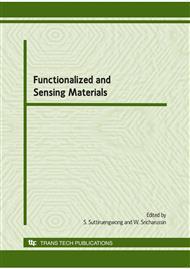p.194
p.198
p.202
p.206
p.210
p.214
p.219
p.223
p.227
The Effect of Glass Fiber Aspect Ratio on Mechanical and Thermal Properties of PU/GF Foam Composites
Abstract:
In this study Polyurethane (PU)/glass fiber (GF) foam composites have been produced. The PU matrix consisted of Polyol and Diphenylmethane Diisocyanate (MDI). A long glass fiber (GF) at different aspect ratio (L/D ratio) was used to study the effect of reinforcement content on their properties such as; mechanical properties (flexural modulus, stress and strain at break, hardness, impact strength) and thermal properties (heat distortion temperature, HDT). It is found that the mechanical properties such as the flexural properties (strength, strain, and modulus) and impact strength increase as increasing GF aspect ratio and optimum at aspect ratio = 7.05. However, GF aspect ratio has a slight effect on the composites hardness due to GF contents and PU densities of PU/GF foam composites are not different, significantly. And the heat distortion temperature slightly increases as GF aspect ratio.
Info:
Periodical:
Pages:
210-213
Citation:
Online since:
January 2010
Keywords:
Price:
Сopyright:
© 2010 Trans Tech Publications Ltd. All Rights Reserved
Share:
Citation:


